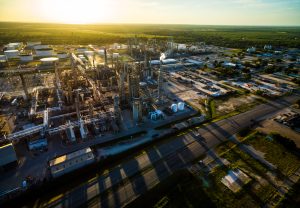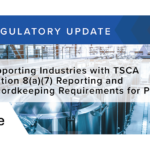
Environmental site assessments (ESAs) are an essential part of understanding the potential risks and hazards associated with a piece of land. In the case of Cedar Park, Phase 2 environmental site assessments play a crucial role in evaluating the condition of the environment and identifying any potential contamination or hazards that may exist. This article aims to provide an in-depth understanding of Phase 2 assessments in Cedar Park, covering their purpose, key components, process, interpretation of results, legal aspects, and the impact they have on the community.
Understanding Phase 2 Environmental Site Assessments
The Purpose of Phase 2 Assessments
The primary purpose of Phase 2 environmental site assessments in Cedar Park is to determine if there are any potential hazards or contamination present on a property. While Phase 1 assessments provide an initial overview of a site’s environmental condition, Phase 2 assessments involve more detailed investigation and sampling to confirm or refute the presence of contaminants.
Phase 2 assessments are typically conducted when potential contamination has been identified during Phase 1 investigations or other means. These assessments are necessary to evaluate the level of contamination and assess potential risks to public health and the environment.
Key Components of a Phase 2 Assessment
A Phase 2 assessment in Cedar Park comprises several essential components. These may include:
- Field investigations: Trained professionals conduct on-site inspections and collect samples.
- Sampling and analysis: Soil, water, and air samples are collected and analyzed in certified laboratories to determine the presence and concentration of contaminants.
- Risk assessment: Professionals evaluate the potential risks associated with the identified contaminants based on exposure pathways and toxicological data.
These components work together to provide a comprehensive understanding of the environmental status of a site, helping stakeholders make informed decisions about the need for further action, such as remediation or redevelopment.
The Process of Conducting a Phase 2 Assessment in Cedar Park
Preliminary Site Investigation
Before diving into the detailed assessment, a preliminary site investigation is conducted to gather essential background information on the property. This may include reviewing historical records, previous environmental reports, and interviewing individuals familiar with the site’s history.
This investigation helps to identify potential areas of concern and guides the subsequent sampling and analysis efforts.
Sampling and Analysis
The heart of a Phase 2 assessment lies in the collection and analysis of samples from various media, such as soil, groundwater, and surface water. Highly skilled professionals take great care to ensure the integrity and representativeness of the collected samples.
These samples are then analyzed in accredited laboratories using advanced techniques to detect the presence and concentration of potential contaminants. The results are compared to regulatory standards or guidelines to evaluate the level of contamination.
Risk Assessment
Once the sampling and analysis are complete, the data obtained is evaluated to assess the potential risks associated with the identified contaminants. This involves considering exposure pathways, such as inhalation, ingestion, or dermal contact, and analyzing the toxicological properties of the contaminants.
Based on this assessment, conclusions are drawn regarding the potential risks to human health and the environment, which form the basis for decision-making regarding remediation actions and future land use.
Interpreting the Results of a Phase 2 Assessment
Identifying Potential Hazards
One of the primary purposes of Phase 2 assessments is to identify potential hazards that may exist on a property. These hazards can include chemical contaminants, such as heavy metals, petroleum hydrocarbons, or volatile organic compounds (VOCs). By identifying these hazards, stakeholders can take appropriate measures to mitigate the associated risks.
Evaluating Site Contamination
Phase 2 assessments also help in evaluating the extent and severity of contamination. The sampling and analysis data provide valuable insights into the presence, concentration, and distribution of contaminants across the site, allowing for a comprehensive understanding of the contamination issues.
This evaluation is critical in determining the appropriate remediation measures required to restore the site to an acceptable level of contamination, ensuring the protection of human health and the environment.
Determining Remediation Needs
Based on the findings of a Phase 2 assessment, the need for remediation can be determined. Remediation refers to the actions taken to address and mitigate the identified contamination. These actions may include excavation and removal of contaminated materials, groundwater treatment, or implementing engineered barriers to prevent further migration of contaminants.
The detailed data obtained from a Phase 2 assessment enables consultants, regulators, and property owners to make informed decisions regarding the most appropriate and effective remediation strategies for the specific site.
Legal and Regulatory Aspects of Phase 2 Assessments
Compliance with Environmental Laws
Phase 2 environmental site assessments in Cedar Park are conducted to ensure compliance with various environmental laws and regulations. Stakeholders must adhere to federal, state, and local regulations to protect the environment and public health.
These assessments help property owners and developers identify potential liabilities and ensure that their projects meet the necessary environmental standards.
Role of Regulatory Agencies
Regulatory agencies play a crucial role in overseeing and enforcing the environmental regulations associated with Phase 2 assessments. These agencies may include the Environmental Protection Agency (EPA), state environmental departments, and local regulatory bodies.
By partnering with these agencies and following their guidelines, property owners can navigate the regulatory landscape more effectively, ensuring their compliance with the necessary environmental requirements.
Impact of Phase 2 Assessments on Cedar Park
Implications for Property Owners
Phase 2 assessments can have significant implications for property owners in Cedar Park. The results of these assessments may impact property values, financing options, and future land use decisions. Property owners are responsible for addressing any identified contamination to comply with regulations and protect their investment.
Effect on Community Health and Safety
One of the most crucial impacts of Phase 2 assessments is on the overall health and safety of the Cedar Park community. By identifying and mitigating potential hazards and contamination, these assessments contribute to maintaining a safe and healthy living environment for residents.
Through rigorous investigation and risk assessment, Phase 2 assessments ensure that potential risks to human health and the environment are identified and addressed, enhancing quality of life for the community.
Influence on Future Development Plans
Phase 2 assessments provide valuable information that can influence future development plans in Cedar Park. The identification of contamination or hazards may inform decisions regarding land use zoning, redevelopment strategies, or the selection of appropriate mitigation measures.
By integrating the findings of these assessments into future development plans, Cedar Park can ensure responsible and sustainable growth while safeguarding the environment.
In conclusion, Phase 2 environmental site assessments play a crucial role in understanding and mitigating the potential risks and hazards associated with Cedar Park. By conducting thorough investigations, sampling, analysis, and risk assessments, these assessments provide valuable insights into the presence and extent of contamination, allowing for informed decision-making regarding remediation and future land use. Compliance with environmental laws and regulations, along with the involvement of regulatory agencies, ensures the proper execution of Phase 2 assessments. Not only do these assessments have implications for property owners, but they also contribute to community health and safety and influence future development plans, fostering responsible and sustainable growth in Cedar Park.
If you’re seeking expert guidance for your Phase 2 Environmental Site Assessment in Cedar Park, look no further than ESE Partners. Our team of experienced environmental engineers and scientists is dedicated to providing comprehensive assessment, remediation, and compliance services tailored to your unique needs. With a commitment to responsible environmental problem solving and a promise to deliver opportunities that improve community quality of life, ESE Partners is your trusted partner in navigating environmental challenges. Don’t let environmental concerns delay your projects. Request A Proposal today and move your business forward with confidence.








